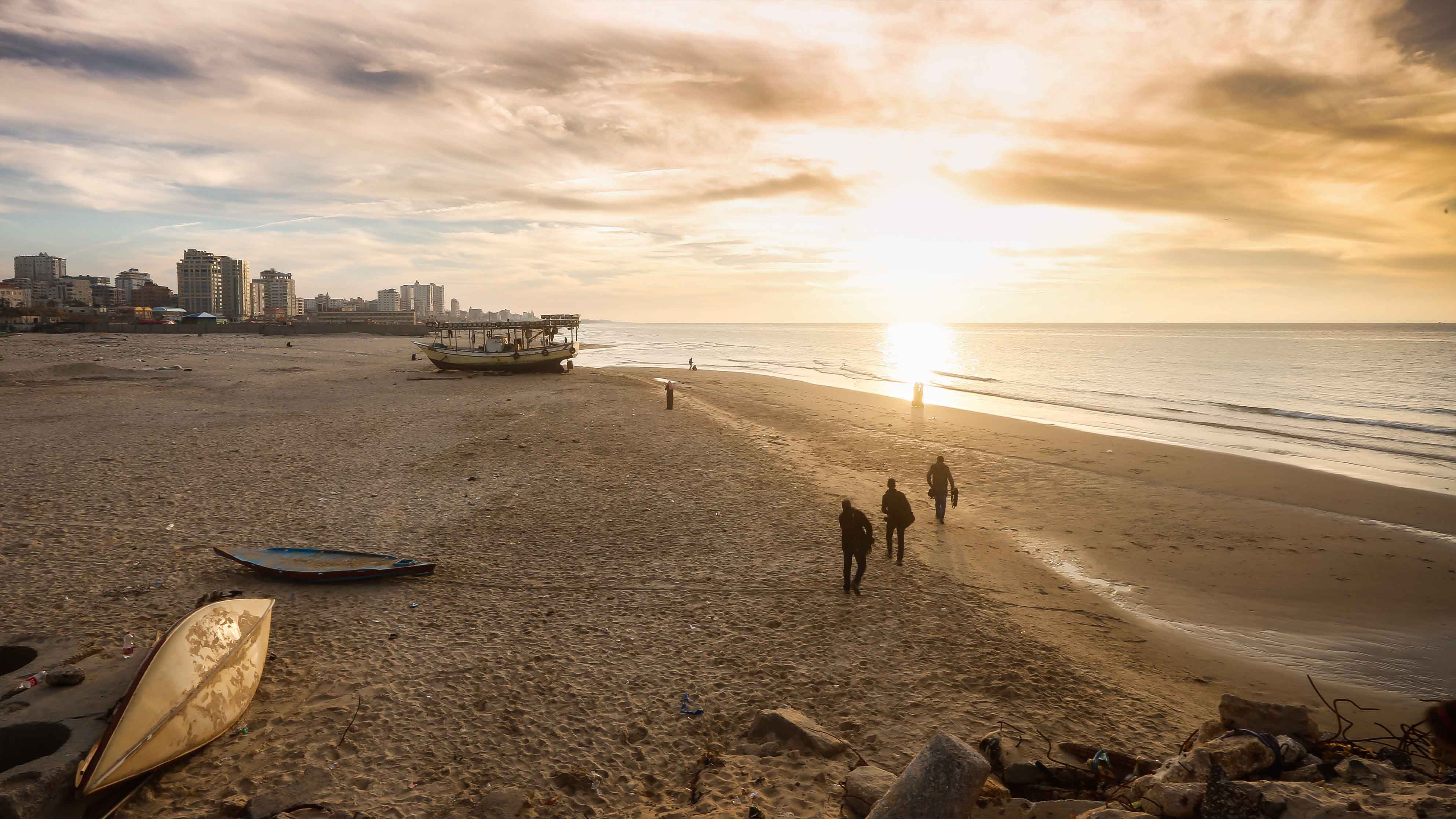AUG / About AUG /
Gaza Port

(Credit: Motaz Al-Araj)
The Port of Gaza is a small port near the Rimal district of Gaza City. It was the principal port on the Mediterranean serving the Incense Road. Strabo and Ptolemy referred to it as Gazaion limen. The port was distinct from the city, which was located opposite it. Under Constantine the Great, the settled area around the port was granted city status and named Konstaneia. Under the emperor Julian, it was downgraded and the name was changed to Maioumas ("harbor place"). It became associated at this time with a pagan festival.
The Port of Gaza was at the end of the Nabataean spice road where trade was conducted in herbs, spices incense, drapery, glass and food. Goods arrived in the port on the backs of camels from Southern Arabia (the Kingdom of Sheba) through Petra, the Arava Valley and crossing Negev Desert via Avdat. At the port of Gaza, these goods were dispatched to the European markets.
Alexander Jannaeus' conquest of Gaza (99 BCE) that denied the Nabateans access to the port and trade with Rome led to Obodas launching a military campaign against the Hasmonean King.
Gaza Port was rebuilt after it was incorporated into the Roman Empire in 63 BCE under the command of Pompey Magnus and trade routes were reopened.
In 2011, eight Roman columns believed to be the remains of a church were swept ashore during a storm. In 2013, the Palestinian naval police found ancient artifacts that included poles and baked clay.


